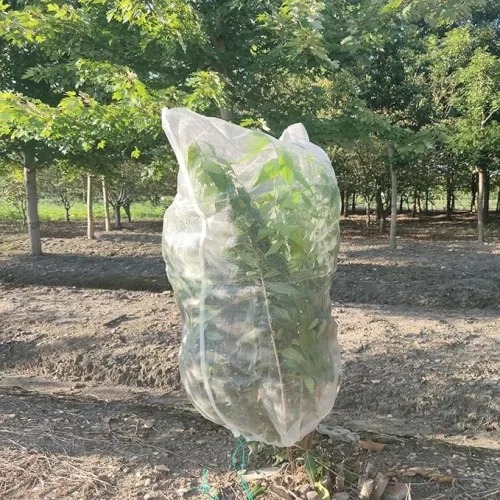-
 Afrikaans
Afrikaans -
 Albanian
Albanian -
 Amharic
Amharic -
 Arabic
Arabic -
 Armenian
Armenian -
 Azerbaijani
Azerbaijani -
 Basque
Basque -
 Belarusian
Belarusian -
 Bengali
Bengali -
 Bosnian
Bosnian -
 Bulgarian
Bulgarian -
 Catalan
Catalan -
 Cebuano
Cebuano -
 China
China -
 Corsican
Corsican -
 Croatian
Croatian -
 Czech
Czech -
 Danish
Danish -
 Dutch
Dutch -
 English
English -
 Esperanto
Esperanto -
 Estonian
Estonian -
 Finnish
Finnish -
 French
French -
 Frisian
Frisian -
 Galician
Galician -
 Georgian
Georgian -
 German
German -
 Greek
Greek -
 Gujarati
Gujarati -
 Haitian Creole
Haitian Creole -
 hausa
hausa -
 hawaiian
hawaiian -
 Hebrew
Hebrew -
 Hindi
Hindi -
 Miao
Miao -
 Hungarian
Hungarian -
 Icelandic
Icelandic -
 igbo
igbo -
 Indonesian
Indonesian -
 irish
irish -
 Italian
Italian -
 Japanese
Japanese -
 Javanese
Javanese -
 Kannada
Kannada -
 kazakh
kazakh -
 Khmer
Khmer -
 Rwandese
Rwandese -
 Korean
Korean -
 Kurdish
Kurdish -
 Kyrgyz
Kyrgyz -
 Lao
Lao -
 Latin
Latin -
 Latvian
Latvian -
 Lithuanian
Lithuanian -
 Luxembourgish
Luxembourgish -
 Macedonian
Macedonian -
 Malgashi
Malgashi -
 Malay
Malay -
 Malayalam
Malayalam -
 Maltese
Maltese -
 Maori
Maori -
 Marathi
Marathi -
 Mongolian
Mongolian -
 Myanmar
Myanmar -
 Nepali
Nepali -
 Norwegian
Norwegian -
 Norwegian
Norwegian -
 Occitan
Occitan -
 Pashto
Pashto -
 Persian
Persian -
 Polish
Polish -
 Portuguese
Portuguese -
 Punjabi
Punjabi -
 Romanian
Romanian -
 Russian
Russian -
 Samoan
Samoan -
 Scottish Gaelic
Scottish Gaelic -
 Serbian
Serbian -
 Sesotho
Sesotho -
 Shona
Shona -
 Sindhi
Sindhi -
 Sinhala
Sinhala -
 Slovak
Slovak -
 Slovenian
Slovenian -
 Somali
Somali -
 Spanish
Spanish -
 Sundanese
Sundanese -
 Swahili
Swahili -
 Swedish
Swedish -
 Tagalog
Tagalog -
 Tajik
Tajik -
 Tamil
Tamil -
 Tatar
Tatar -
 Telugu
Telugu -
 Thai
Thai -
 Turkish
Turkish -
 Turkmen
Turkmen -
 Ukrainian
Ukrainian -
 Urdu
Urdu -
 Uighur
Uighur -
 Uzbek
Uzbek -
 Vietnamese
Vietnamese -
 Welsh
Welsh -
 Bantu
Bantu -
 Yiddish
Yiddish -
 Yoruba
Yoruba -
 Zulu
Zulu
steel stucco netting
The Benefits of Steel Stucco Netting in Construction
In the realm of construction and building materials, steel stucco netting has garnered attention for its unique properties and wide range of applications. As an essential component in modern building practices, it serves as a support structure for stucco, enhancing durability, appearance, and overall effectiveness. This article delves into the attributes, benefits, and applications of steel stucco netting, making it clear why it has become a popular choice among contractors and builders.
What is Steel Stucco Netting?
Steel stucco netting, often referred to as wire mesh, is a type of reinforcement material used primarily in stucco applications. It is made from galvanized steel that provides an effective barrier against cracking and ensures the longevity of the stucco finish. Traditionally, stucco has been known for its aesthetic appeal and versatility in exterior finishes, but its performance can be compromised if not properly supported. This is where steel stucco netting comes into play, acting as a reliable reinforcement that enhances the overall structure.
Advantages of Steel Stucco Netting
1. Durability One of the primary benefits of steel stucco netting is its durability. Galvanized steel is resistant to rust and corrosion, making it ideal for buildings that are exposed to the elements. This enhances the lifespan of the stucco finish, reducing the need for repairs and maintenance.
2. Prevention of Cracking Stucco is susceptible to cracking due to temperature changes and structural movement. By incorporating steel stucco netting, builders can distribute stress evenly across the surface, minimizing the risk of cracks and ensuring a long-lasting finish.
3. Enhanced Structural Integrity The addition of steel netting reinforces the overall structure of the stucco application. It provides a sturdy framework that supports the weight of the stucco while allowing for proper adhesion, ensuring that the finish remains intact over time.
steel stucco netting

4. Versatility Steel stucco netting can be used in a variety of applications beyond standard stucco finishes. It is also suitable for use with EIFS (Exterior Insulation and Finish Systems) and can be adapted for various architectural styles, making it an excellent choice for both residential and commercial projects.
5. Cost-Effectiveness While the initial investment in steel stucco netting may be higher than other reinforcement materials, its long lifespan and lower maintenance requirements make it a cost-effective choice in the long run. Builders can save on repair costs and labor, enhancing the overall value of the building project.
Applications of Steel Stucco Netting
Steel stucco netting is utilized in a myriad of applications, making it a versatile material in the construction industry. Common uses include
- Residential Homes Many builders incorporate steel netting when applying stucco finishes to residential properties, providing homeowners with a durable exterior that withstands harsh weather conditions. - Commercial Buildings In commercial construction, steel stucco netting is often employed to provide an attractive and resilient finish while adhering to stringent safety and building codes. - Renovations When renovating older structures, steel stucco netting can be essential in reinforcing existing walls, ensuring the continued integrity of the building while enhancing its aesthetic appeal.
Conclusion
Steel stucco netting is an invaluable asset in modern construction. Its durability, ability to prevent cracking, and versatility make it an ideal choice for both residential and commercial applications. As the industry continues to prioritize longevity and efficiency in building practices, the use of steel stucco netting will undoubtedly remain a standard in robust construction methodologies.
-
Shipping Plastic Bags for Every NeedNewsJul.24,2025
-
Safety Netting: Your Shield in ConstructionNewsJul.24,2025
-
Plastic Mesh Netting for Everyday UseNewsJul.24,2025
-
Nylon Netting for Every UseNewsJul.24,2025
-
Mesh Breeder Box for Fish TanksNewsJul.24,2025
-
Expanded Steel Mesh Offers Durable VersatilityNewsJul.24,2025











